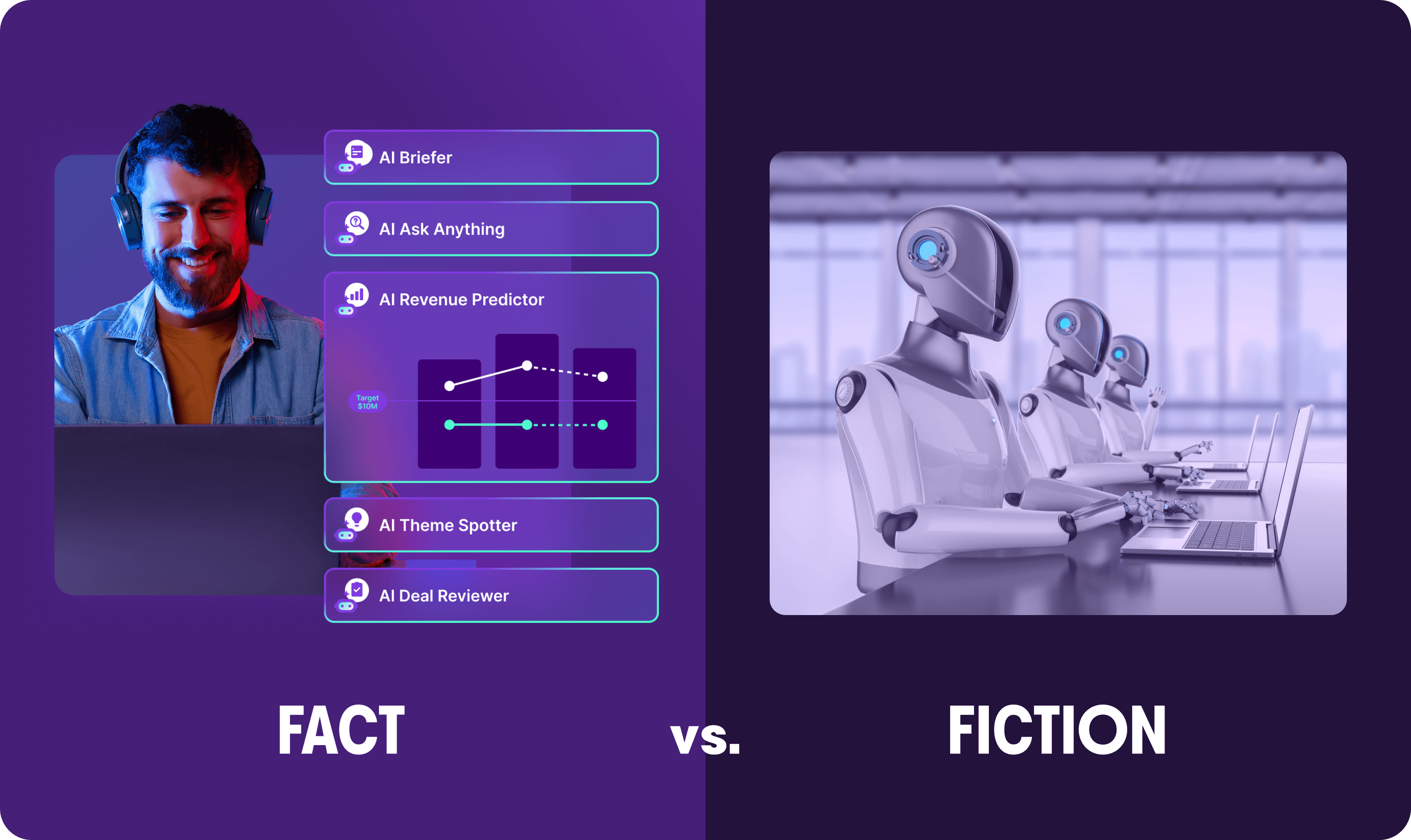Sales strategies
Mastering the art of handling sales objections

Chris Orlob
Content Author
Published on: March 12, 2018

In the Gong Labs series, we publish data from analyzing sales calls with natural language processing and AI. Subscribe here for future research.
—
Mastering Objection Handling
Successful sales reps do six things differently when handling objections.
Five of them are intuitive.
The sixth one, not so much.
Let me explain.
We pulled 67,149 call recordings from our database of over 1M calls.
And we analyzed them with machine learning.
The calls in this 67k subset were all demos done over screen sharing platforms.
Each demo was recorded, transcribed, and analyzed to identify the behaviors that correlate with success.
The original goal was to identify the “anatomy of a winning sales demo.”
Which we did.*
But we also noticed some interesting objection handling trends.
In other words, the original study revealed nine things star reps do during their demos.
But it also showed us six things they do to handle objections during those demos.
Here they are.
When In Doubt, Pause
Keep calm and take a deep breath.
It’s what successful reps do upon getting an objection.
We measured the average length star reps pause after getting an objection, compared to their peers.
It’s a metric we’ve dubbed the “Patience Score” here at Gong.io.
When it comes to reacting to objections, successful reps have a polar opposite response than their peers:
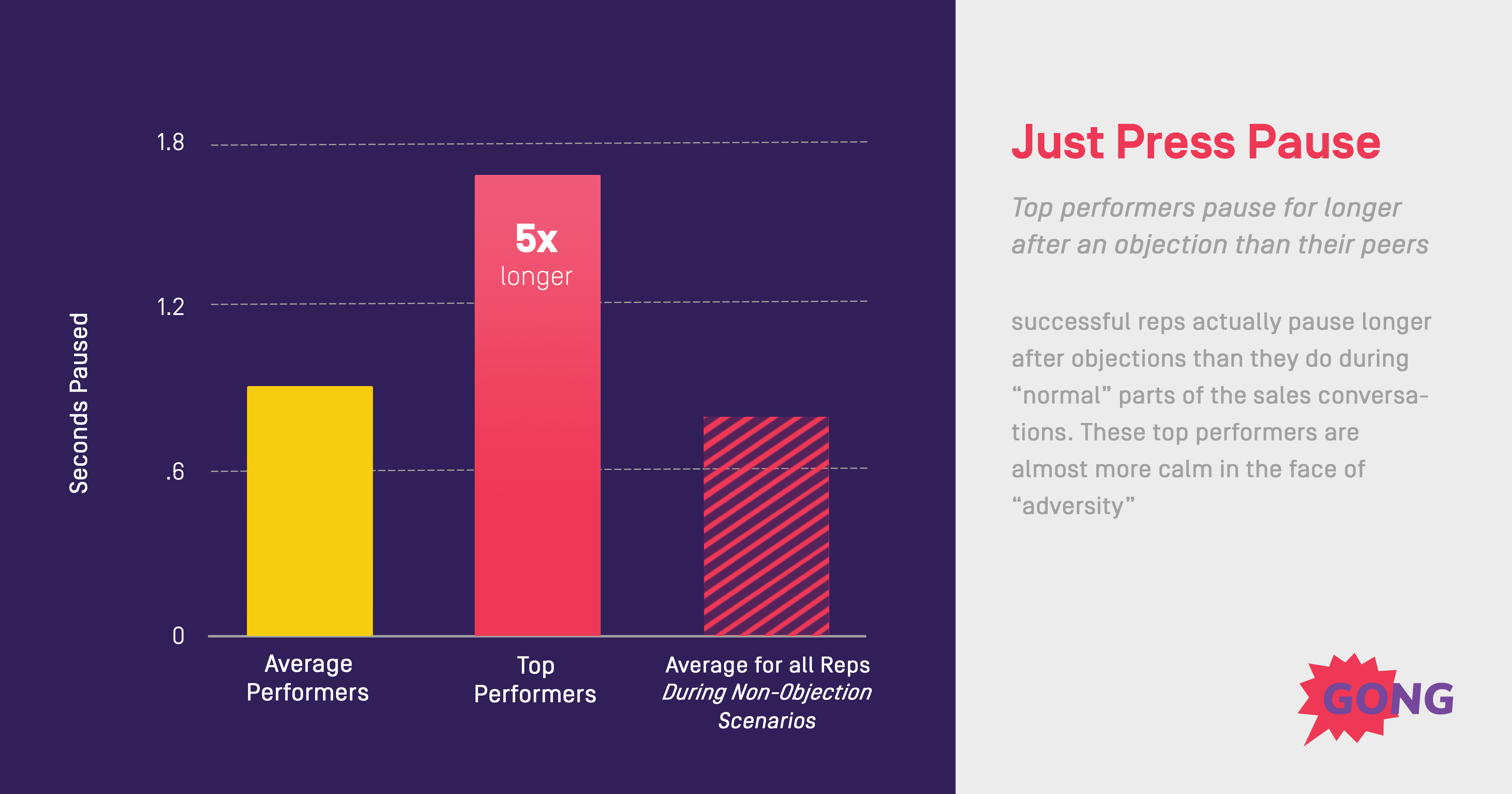
Successful sellers actually pause longer after objections than they do during “normal” parts of the sales conversation.
They are calmer in the face of “adversity.”
It’s like objections trigger them to go into slow motion.
Their average-performing peers, by contrast, get “riled up.”
The length of time they pause plummets after getting an objection.
They practically interrupt their customer while answering the objection.
They’re so eager to “rebuttal” that they pounce on the customer.
Speaking of getting riled up, average reps also speak a bit faster after getting an objection
(note that top reps don’t necessarily talk slower, they maintain their pace more or less):
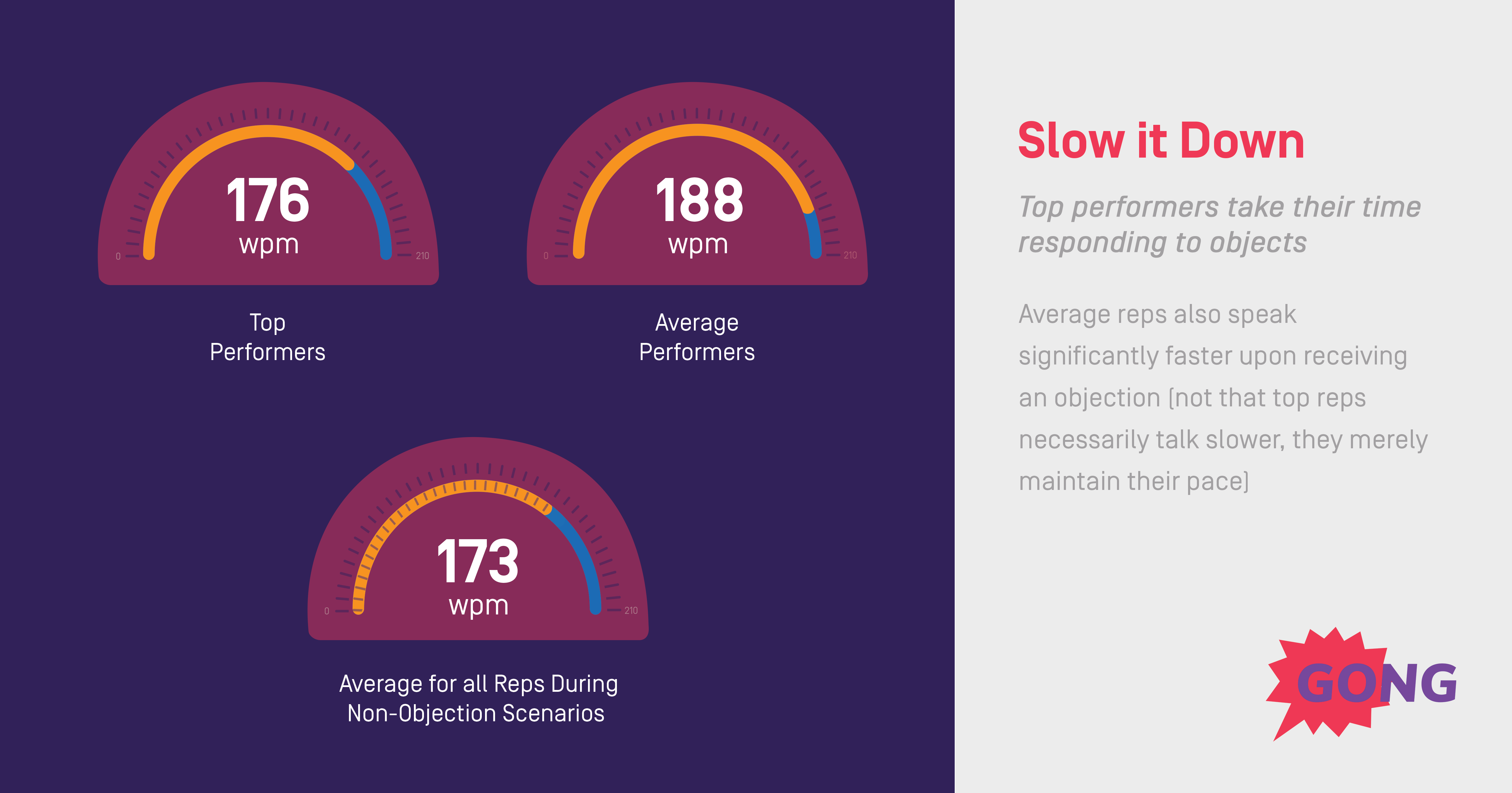
The Fewer Words, the Better
When “average reps” get an objection, they go on a “knee-jerk” monologue that stretches 21.45 seconds.
Objections trigger insecurity for below-quota reps: an overt need to set the record straight.
This manifests itself in long, uninterrupted talking:
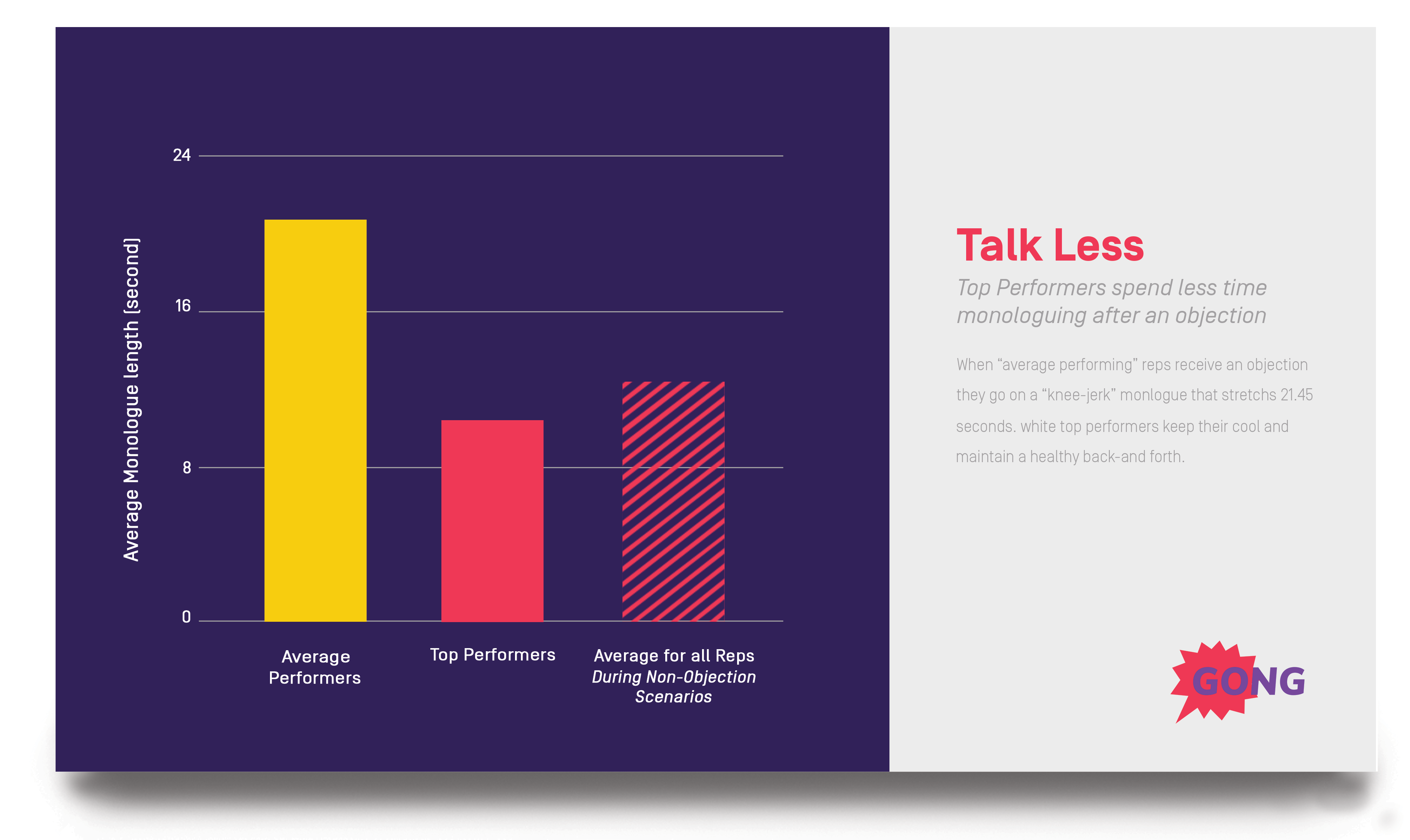
When you “x-ray” the objection portion of the conversation of an average rep, it might look something like this:
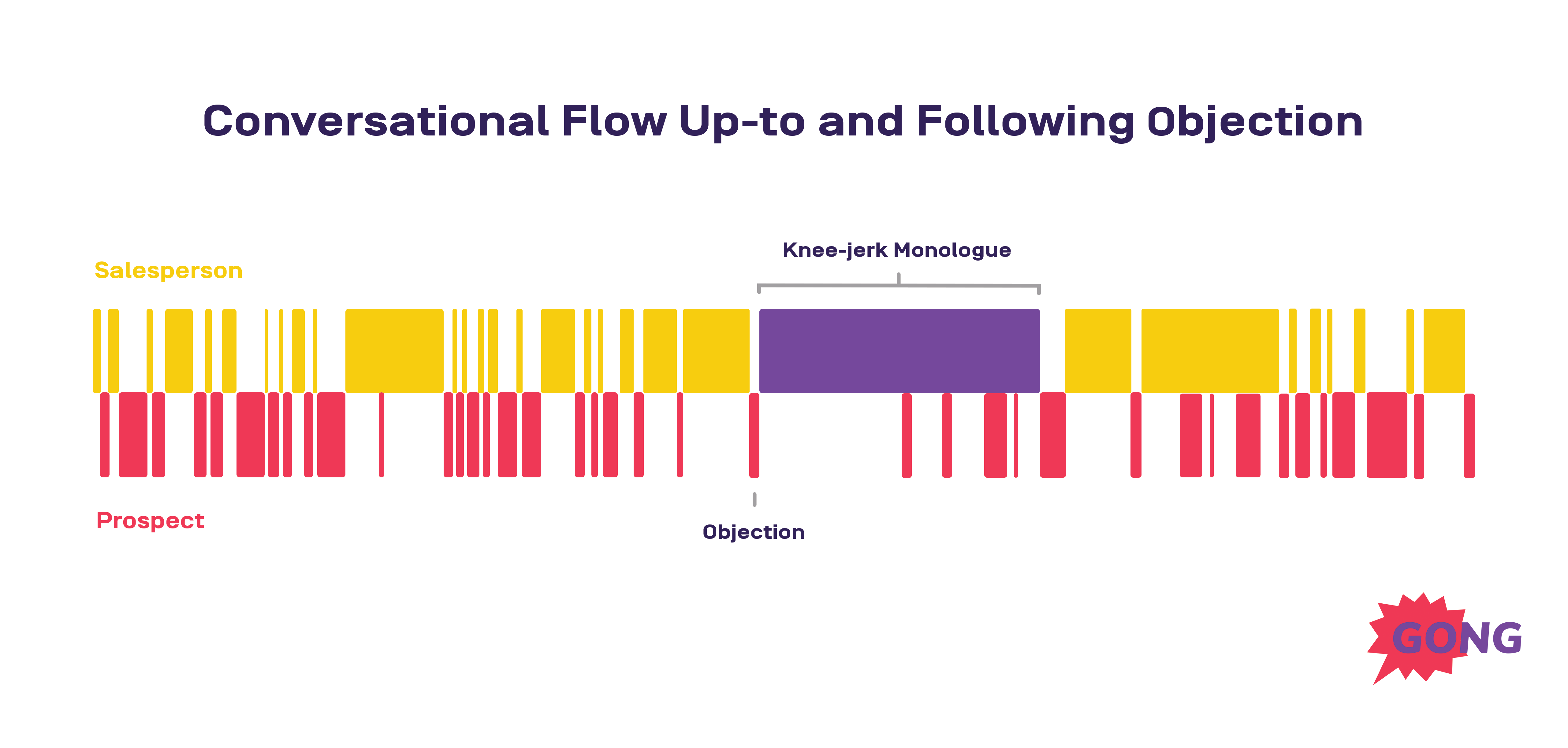
Clarify Customer Concerns
Objection scenarios are rife with misunderstanding.
Average sellers are so eager to overcome objections, they end up addressing the wrong issue.
Take note: a strong answer to the wrong objection makes the objection worse.
Successful sales reps avoid this friction by responding to objections by asking questions:

They don’t automatically assume they understand the concern.
They clarify.
They probe.
In doing so, they are more likely to address the objection accurately.
Have a Conversation, Not a Debate
Successful reps actually don’t do anything special for this next data point.
But that might be the point.
They maintain the “flow” of the conversation, rather than reacting in a drastic way.
The back-and-forth dialogue (measured by “speaker switches” per minute) between a successful rep and the customer maintains its pace during objection scenarios:
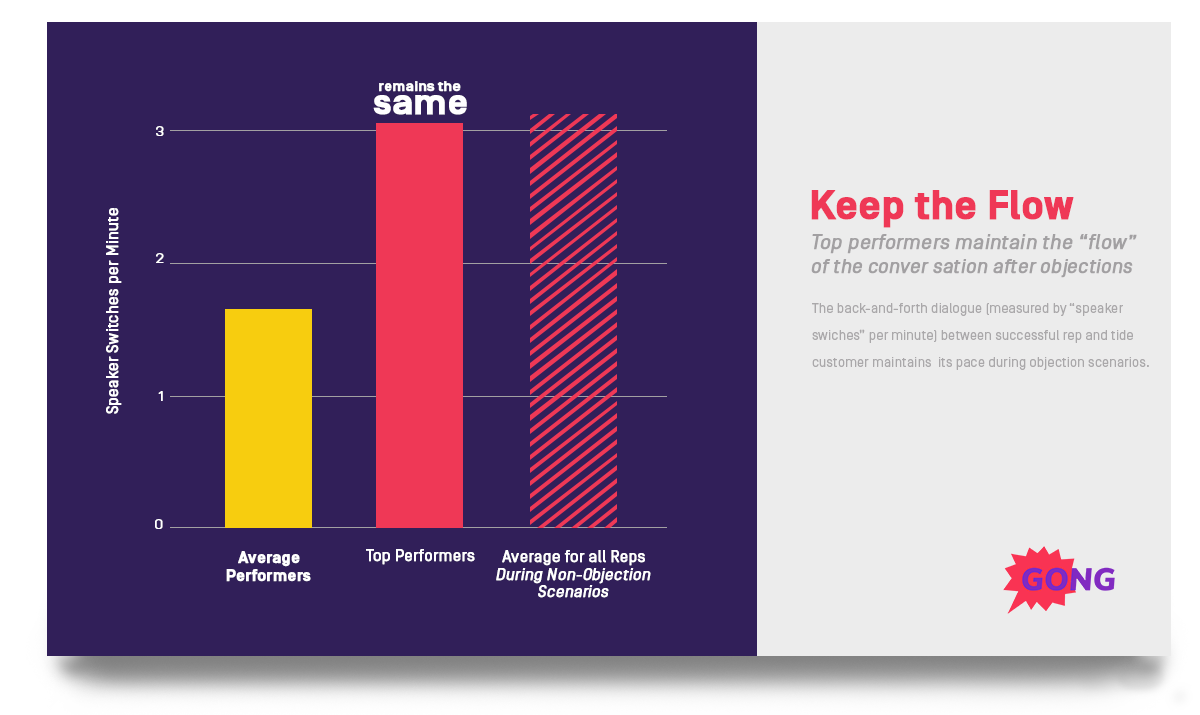
It’s as if the objection wasn’t a hiccup in the conversation at all.
It’s just a query.
For average reps, the pace of back-and-forth dialogue drops dramatically: A tell-tale sign of a disengaged conversation.
Note that this data point is likely just the byproduct of the earlier data point: Monologues.
Close the Objection By Asking This Cringe-Worthy Question
Now for the part *many* of you don’t want to hear :)
Star sales reps frequently wrap-up their response to objections with a variation of this language:
“Does that make sense?”
Some of us loathe that question.
Others use it lavishly.
But regardless of our own feelings, the data has spoken (albeit, with correlation, not causation to be sure).
Even though star sales reps don’t use the above question more frequently than their peers in total, they do ask it more often during three specific topics:
- Agenda setting
- Scheduling “next steps”
- Objections (we only recently discovered this one)
Successful sales reps may not use that phrase often during “regular” parts of their sales conversations.
But they seem to rely on it as a way to close the loop with objections.
(Read more about our analysis of “Does that make sense” here).
Fill In the Rest of the Picture By Commenting
I wish I could tell you the exact combination of words to say to overcome every objection.
But the truth is:
Even though sales is becoming more data-driven every day, many of the qualitative aspects will always exist.
So I’m turning to you for that part:
What qualitative aspects of objection handling did this data leave out?
Write them in the comments below.
Want more stats like these? Subscribe to the Gong.io blog to receive sales data and insights that will help you drive quota attainment across your team.
If you liked this article you may also be interested in:

Content Author
Chris Orlob is the Co-Founder and CEO of Pclub.io, a leading sales training platform designed to help sales professionals accelerate their revenue growth. He is best known for his pivotal role at Gong, where he helped scale the company from $200,000 to $200 million in ARR, contributing to a $7.2 billion valuation. During his tenure at Gong, Chris led the creation of Gong Labs and excelled in various go-to-market roles. Today, through Pclub.io, he leverages his deep expertise in sales and revenue operations to coach over 11,000 SaaS sellers.
Discover more from Gong
Check out the latest product information, executive insights, and selling tips and tricks, all on the Gong blog.



